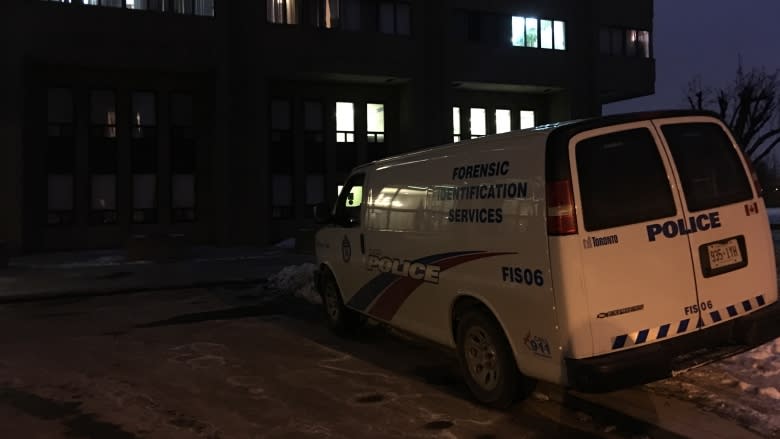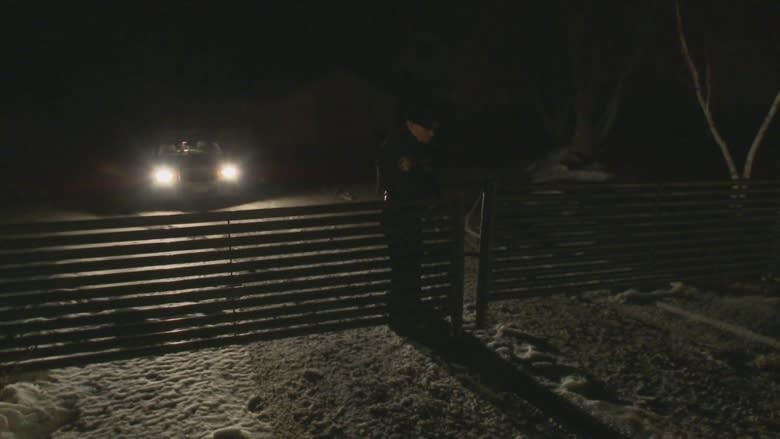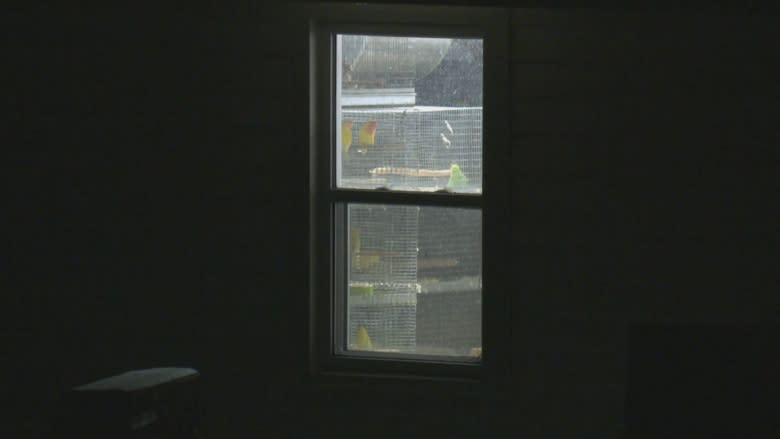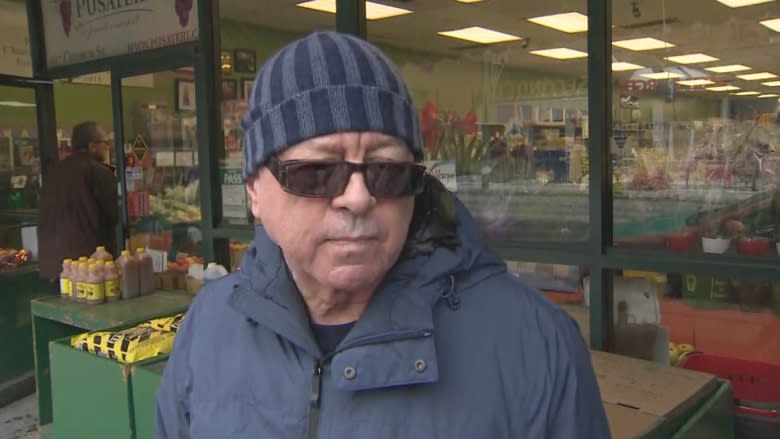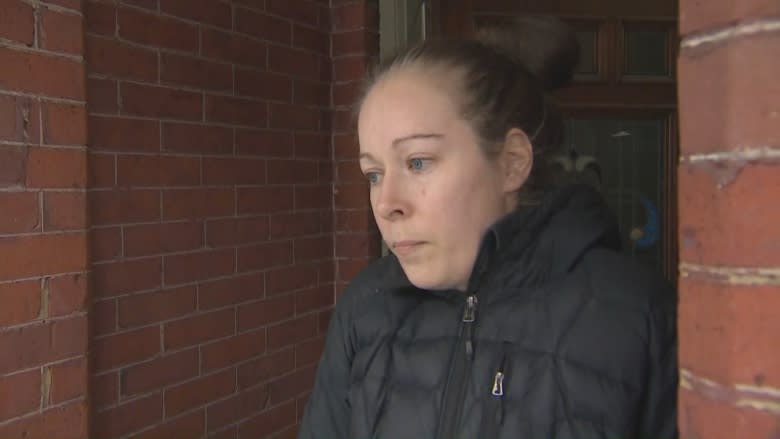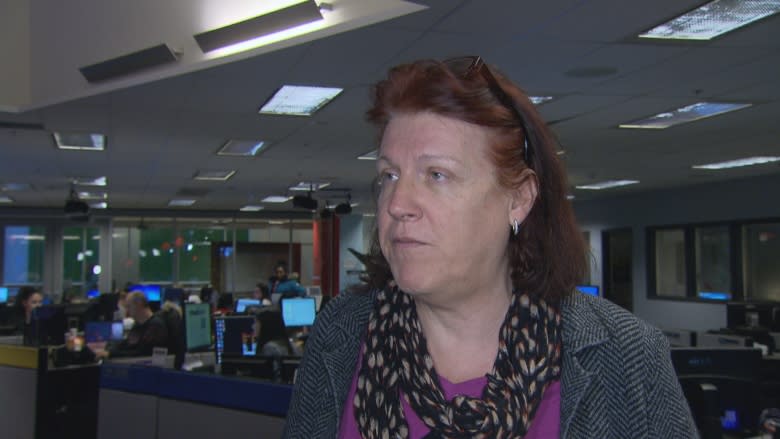Bruce McArthur charged with 1st-degree murders of 2 men who disappeared from Toronto's Gay Village
Police have arrested and charged a suspect with the murders of two men whose disappearances from downtown Toronto have, since last year, stoked fears in the city's gay community.
Bruce McArthur, 66, of Toronto has been charged with the first-degree murders of Andrew Kinsman and Selim Esen, whom investigators presume to be dead, police said Thursday.
"We've apprehended someone who has done tremendous harm to the city," police Chief Mark Saunders said at a news conference.
The self-employed landscaper lives in the city's Thorncliffe Park area — an eastside neighbourhood made up predominately of newcomers to Canada.
Police have also begun searching other properties connected with McArthur — four in Toronto and one in Madoc, a township in eastern Ontario, roughly halfway towards Ottawa.
"We believe he is responsible for the deaths of Mr. Esen and Mr. Kinsman, and we believe he is responsible for the deaths of other men who have yet to be identified," said Det-Sgt. Hank Idsinga.
"In other words, we believe there are other victims."
Idsinga said the bodies of Esen and Kinsman have yet to be found, but that police have a "pretty good idea" what their cause of death was.
"At this stage, we are most concerned with identifying other victims of Mr. McArthur," he said.
Men missing for months
Kinsman, 49, went missing from Toronto's Cabbagetown neighbourhood in June, while Esen, 44, was last seen in the Yonge and Bloor area last April. Both areas are close to the predominantly gay neighbourhood of Church and Wellesley.
A police task force called Project Prism was established in August to investigate their disappearances and share information with another task force looking into the 2012 disappearances of three other men in the Church and Wellesley area, called Project Houston.
Rumours had swirled in Toronto's Gay Village that a string of disappearances from the area could be connected, but in December, investigators had said that there was no proof that a serial killer was operating in the area.
On Thursday, Saunders commented on that statement.
"In policing what we do is we follow the evidence, and what I said at the time ... was accurate at that time," he said.
Now, police say they are actively working to identify other possible victims.
They ask that any member of the public with information contact them at 416-808-2021.
Sexual relationship with Kinsman
News of the disappearances of Esen and Kinsman also sparked concern among residents in the heart of Toronto's gay community about the safety of online dating.
On Thursday, police said McArthur had been active on several dating apps, as were both missing men.
Idsinga also revealed that McArthur and Kinsman were involved in a sexual relationship for "some time." He said police still don't know if McArthur had a relationship of any kind with Esen.
He declined to specify how McArthur had met the two men.
Police search locations
On Thursday evening a police forensics van was parked outside McArthur's apartment building in the densely populated Thorncliffe Park neighbourhood.
One passerby, Joe Casquilho, said his daughter has lived in the building for three years. Leaving her apartment with his wife, he told CBC News the entire family felt scared when they saw the police arrive.
"My daughter feels really scared because what's happened here is so close by," he said. "You don't know what exactly is going on."
Around the same time, reporters looked on as police opened the gate and entered the property in Madoc.
Through the darkness, several colourful birds could be seen in a lit window of the house.
Family, friends find closure
Andrew Kinsman's sister Patricia told CBC Toronto that police called her just a few hours before Thursday's news conference to tell her that they believed they had found her brother's killer.
"All I could keep saying was 'oh my God, oh my God and thank you, you've done your job,'" she said.
Kinsman said that her family had slowly come to grips with the thought that Andrew had died in the months since he disappeared.
"Even on Dec. 9, my sister Karen and I were still searching ... just at that point we knew we were looking for a body. But you always have that .5 per cent hope that he's going to come back," she said.
She said she was still in shock from the news, but hopes that "this will give us a little bit of closure."
Nicole Borthwick, a friend of Kinsman's who volunteered with him at a food bank and later helped organize searches for him, said her initial reaction was to be "very relieved" but that "complete closure" won't come until his body is found.
The neighbourhood reacts
"My first reaction, honest to god is, I thought there was serial killer working in this neighbourhood," said Karel, a man who works in the Church and Wellesley area and who didn't want his last name used.
He hopes this arrest will bring closure to other missing person cases in the area, but he says he's still cautious about going home at night.
Bruce Mcginnis says he doesn't want to get "carried away with speculation," but he finds the news that one person may be responsible for multiple deaths "very disturbing."
"It scares everybody," he said.
Megan Lowe, who was a friend and neighbour of Kinsman, said the revelation is "a shock for the community."
"It's closure, but now there's so many more questions," she said. "Why did they do this?"
'We got to do what we got to do'
Nicki Ward, director of the Church-Wellesley Neighbourhood Association, said it took the community pushing "very hard" for answers from the police to make this arrest happen.
On Thursday she told CBC there is a "systemic problem" with the Toronto police services who should be "getting more officers on the street" and "getting community officers to understand their local culture."
"Who should be there, who shouldn't be there," she explained.
Back in December, the neighbourhood association developed a safe walk program.
"Our community is extremely resilient, and if needs be we do things to protect ourselves," she added. "We got to do what we got to do."
On Thursday, Saunders said the arrest was a "classic example" of police listening to the community.
"I do believe the community is directly responsible for enhancing community safety as a result of how this investigation has concluded," he said. "This came from the community continually talking to us and making us aware."


